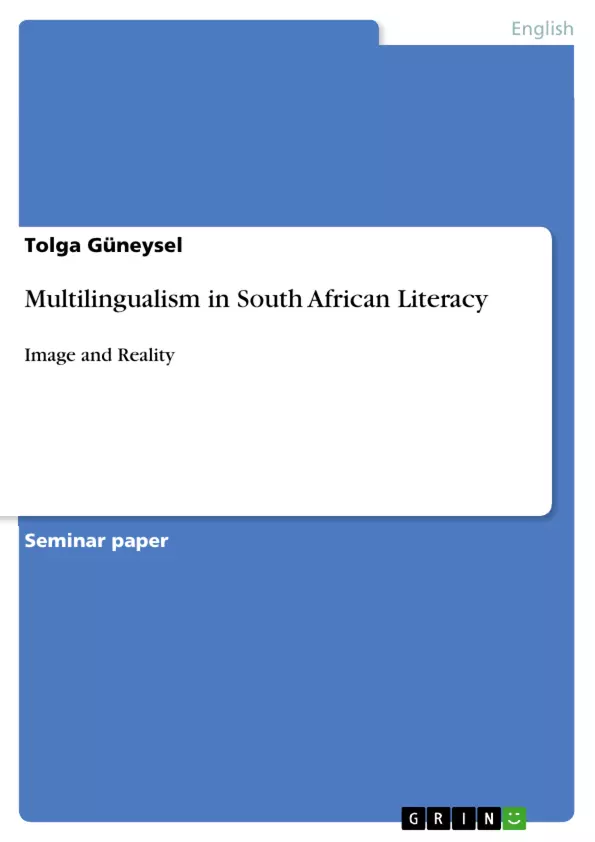South Africa in the year 2009 represents the home of approximately 45 million people of different origin, religions, cultures and languages. Its population is, consequently, anything but homogenous neither from a cultural nor, and especially, from a linguistic point of view.
In order to understand how these exceptional diversities could develop, it is absolutely essential to review the country‘s history first. Like many African countries, South Africa is exceedingly characterized by the colonial times as well as the apartheid era. Major influence derives from Dutch and British colonies, which is still reflected in contemporary daily routine. Furthermore, several wars and changes of government result in a country of little economic power and discordance about major governmental issues.
Inhaltsverzeichnis (Table of Contents)
- Introduction
- Historical Context
- The Pre-Apartheid Era
- The Bantu Education Act
- The Era of the Apartheid
- Intermediate Results
- The Present Situation
- A General Analysis of the Present Situation
- Reasons for Increasing Anglicization
- Political Reasons
- The Curriculum 2005
- An Analysis of the Present School Situation
- Hands on: An Online Survey in July 2010
- Methodology
- Results
- Critical Review
- Cultural and Demographic Problems
- Teacher's Response and Code-switching
- Intermediate Results and Attempts at a Solution
- Conclusion
Zielsetzung und Themenschwerpunkte (Objectives and Key Themes)
This paper explores the complex relationship between multilingualism and education in South Africa, focusing specifically on the increasing prevalence of English as the preferred medium of instruction (MOI). The analysis examines historical factors, including the colonial era and apartheid, to understand the current challenges and debates surrounding language policy in education.
- The historical context of multilingualism and education in South Africa
- The impact of the apartheid era on language policy and education
- The role of English as a medium of instruction in the present-day South African education system
- The reasons for increasing Anglicization in education
- The potential implications of these trends for cultural diversity and educational equity
Zusammenfassung der Kapitel (Chapter Summaries)
- Introduction: This chapter introduces the topic of multilingualism in South African education, highlighting the country's diverse population and the historical influences that have shaped its education system. It also outlines the research questions guiding the analysis, focusing on the prevalence of English as the preferred MOI and the potential impact on educational equity.
- Historical Context: This chapter provides a historical overview of language policies in South African education, tracing the evolution from the pre-apartheid era to the present day. It examines the impact of colonial influences, the Bantu Education Act, and the apartheid regime on the status of English and other languages in schools.
- The Present Situation: This chapter analyzes the current state of multilingualism in South African education, focusing on the prevalence of English as the MOI. It explores the reasons for this trend, including political factors and the influence of the Curriculum 2005. The chapter also examines the challenges and opportunities presented by the current language landscape, drawing on an online survey conducted in 2010.
Schlüsselwörter (Keywords)
This paper focuses on the key concepts of multilingualism, education, language policy, English as a medium of instruction (MOI), Anglicization, historical context, apartheid, colonial influences, curriculum development, and educational equity in the South African context.
- Quote paper
- Tolga Güneysel (Author), 2009, Multilingualism in South African Literacy, Munich, GRIN Verlag, https://www.grin.com/document/159384



